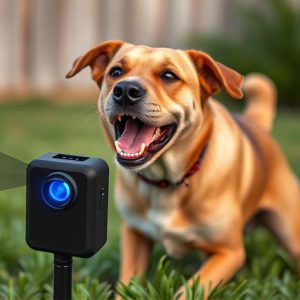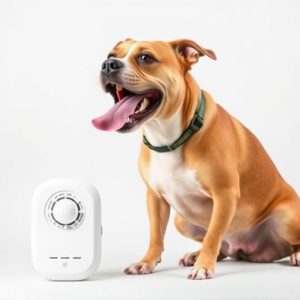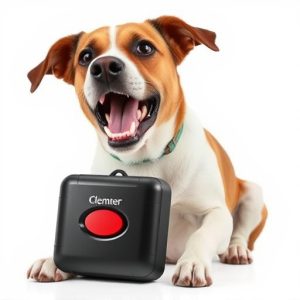Training Dogs with Ultrasonic Repellents: Effective Gear & Techniques
Dogs' environmental interactions shape their behavior, making understanding responses crucial w…….
Dogs' environmental interactions shape their behavior, making understanding responses crucial when using handheld dog deterrents like ultrasonic repellents. These non-violent tools emit inaudible sound waves to startle dogs, encouraging area or behavior avoidance. Effective carrying methods, such as holsters or pouches, offer enhanced security for outdoor use. Training involves positive reinforcement and gradual exposure, rewarding desired behavior to associate the device with positives. Stress-reducing carrying techniques, short sessions, patience, and secure storage are recommended for optimal comfort while each dog learns at its own pace.
“Unleash a new approach to canine control with Handheld Dog Deterrent Carrying Methods and innovative ultrasonic repellent gear. This comprehensive guide explores the science behind dog behavior, shedding light on why certain sounds and gestures deter them. We delve into the effectiveness of ultrasonic repellents as a humane training tool, offering practical tips for optimal use. From understanding your dog’s reactions to mastering training techniques, this article equips you with the knowledge to navigate canine behavior like a pro.”
- Understanding Dog Behavior and Ultrasonic Repellents
- Different Handheld Dog Deterrent Carrying Methods
- Training Techniques for Effective Use of Ultrasonic Gear
Understanding Dog Behavior and Ultrasonic Repellents
Dogs, like all animals, respond to their environment and stimuli. Understanding their behavior is key when employing tools like handheld dog deterrents. Ultrasonic repellents, for instance, emit high-frequency sound waves that are inaudible to humans but can startle or discomfort dogs, encouraging them to avoid certain areas or behaviors.
These devices, often carried via convenient handheld methods, offer a non-violent approach to training and behavior modification. Training with ultrasonic deterrents requires consistency and patience; they’re best used as positive reinforcement tools alongside other training techniques. By combining these repellents with rewarding desired behaviors, you can effectively teach your dog new habits while minimizing unpleasant experiences through innovative carrying methods like portable, compact designs that allow for easy transport and ready access during walks or in the car.
Different Handheld Dog Deterrent Carrying Methods
When it comes to using handheld dog deterrent gear, one of the most significant factors is how you carry and deploy it effectively. Different methods ensure you can respond swiftly to your dog’s behavior in various environments. A popular approach is the classic hand-held design, offering direct control and portability. This method allows for quick activation when needed, making it ideal for walks or training sessions in public spaces.
For a more secure carrying option, consider holsters or pouches designed specifically for dog deterrent devices. These can be attached to belts or bags, providing easy access while keeping the device safe from potential damage. Such carriers are excellent for outdoor adventures or when navigating dense landscapes, ensuring your hands remain free while still having immediate control over the deterrent gear.
Training Techniques for Effective Use of Ultrasonic Gear
Training your dog to respond effectively to an ultrasonic repellent gear requires a combination of positive reinforcement and consistent practice. Start by introducing the device in a calm environment, allowing your dog to get used to its sound and texture. Reward them with treats when they remain relaxed or demonstrate desired behavior. This helps associate the gear with positive experiences.
When using handheld dog deterrents, ensure you employ carrying methods that minimize stress for your pet. Keep sessions short and frequent, gradually increasing duration as their familiarity grows. Be patient and consistent, as every dog learns at its own pace. Remember to always store the device securely when not in use, and consider using different holding techniques during training to find what works best for both you and your dog.
When it comes to training your dog with ultrasonic repellent gear, understanding both canine behavior and the technology itself is key. By employing effective handheld dog deterrent carrying methods and utilizing training techniques that enhance sensitivity and responsiveness, you can help your pet develop a natural aversion to unwanted stimuli. Remember, consistent practice in controlled environments will ensure successful integration of this innovative tool into your dog’s training regimen, making it a valuable asset in fostering well-behaved companionship.


